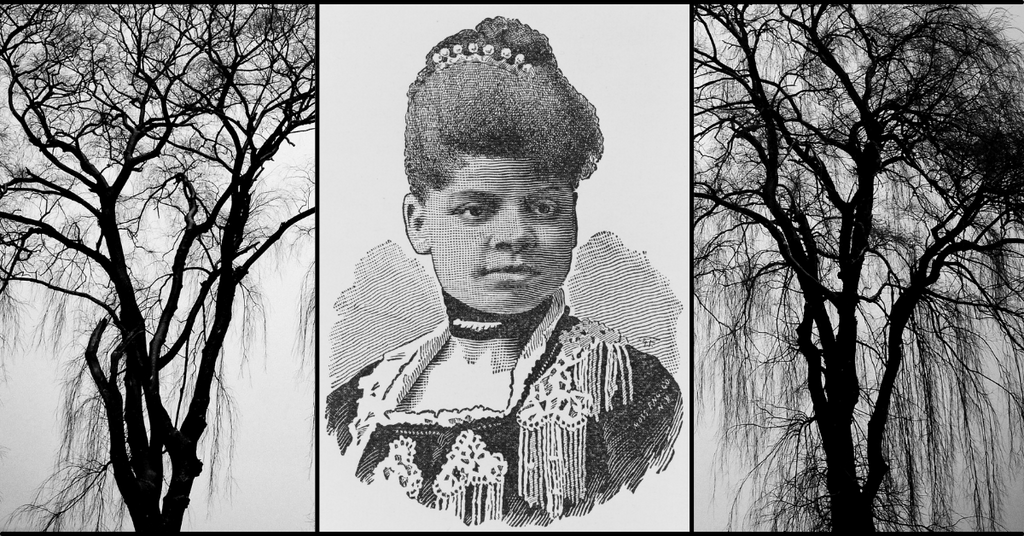Ida B. Wells

Ida B. Wells didn’t start out in Chicago, but while she lived there, she founded the first Black Women’s Club, Black Kindergarten and Black Suffrage Organization. She also helped to elect Oscar De Priest as the first black alderman on the Chicago City Council in 1913. In 1930, the year before her death, Ida ran for the Illinois State Senate. According to Paula J. Giddings1, “She doesn’t win. But she’s again creating paths for not only blacks but for black women particularly and for women in general.”
Ida’s activism in Chicago was powerful and historical, but that was the tip of the iceberg. Her story actually started years before in Holly Springs, Mississippi where she was born on July 16, 1862. She was born into slavery six months before the Emancipation Proclamation. When a yellow fever epidemic killed her parents in 1878, Ida began teaching school and taking care of her younger siblings until 1882, when she moved to Memphis.
A few years after Ida moved to Tennessee, she was on a train bound for Nashville when she was asked to move from her seat, even though she had purchased a first class ticket. When she refused, she was physically removed from the train. She sued and won, but the decision was later overturned by the Supreme Court. The incident served to motivate Ida. She wrote editorials under the pseudonym “iola” for black newspapers challenging the Jim Crow laws in the South and bought a share in the Free Speech and Headlight newspaper which she used to further her cause. But it would be a horrific incident that occurred in 1892, that would launch Ida’s career as an anti-lynching activist.
Tom Moss, a friend of Ida's, and his business partners, Calvin McDowell and Will Stewart, owned the People’s Grocery in Memphis. Their business was successful and that angered the white owners of a neighboring store. After an encounter that left some of the white men injured Moss, McDowell and Stewart were arrested and taken to jail. But there would be no day in court. No justice. Instead, a group of white men took the three men from the jail and murdered them by lynching.
After the death of her friend, Ida travelled the South for two months interviewing witnesses to other lynchings. Talk about a profile in courage! She detailed her findings in a pamphlet entitled, “Southern Horrors”. Between 1894 and 1892, Ida documented 728 lynching cases. She also spent time in London drumming up support for the cause and established the British Anti-Lynching Society in 1894. And she studied and challenged a common charge made against Black men to justify murder:
“this idea of rape and even criminal behavior is not so much connected to lynching, but that lynching was a means to keep blacks—who were very economically competitive at this point—to keep blacks down”
--Ida B. Wells
Ida was away from Memphis when a mob destroyed the offices of the Free Speech and threatened to kill her. So she never went home and settled in Chicago where she met and married Ferdinand Barnett. And there her work continued until her death.
Ida B. Wells-Barnett died on March 25, 1931, at the age of 69.
Want to read more about the life of Ida B. Wells? Click here.
1 Paula J. Giddings is professor emerita of Africana studies at Smith College and author of Ida: A Sword Among Lions.
Sources:
BLACK PAST, Ida Wells-Barnett (1862 – 1931), Thina Steptoe, January 19, 2007
SOUTHERN HORRORS, Ida B. Wells-Barnett, October 6, 1892
HISTORY, When Ida B. Wells Took on Lynching, Threats Forced Her to Leave Memphis, Becky Little, 8/2/2018, updated 2/27/2019
BIOGRAPHY.com, Ida B. Wells, Biography.com Editors, April 2, 2014, updated January 6, 2021


Leave a comment